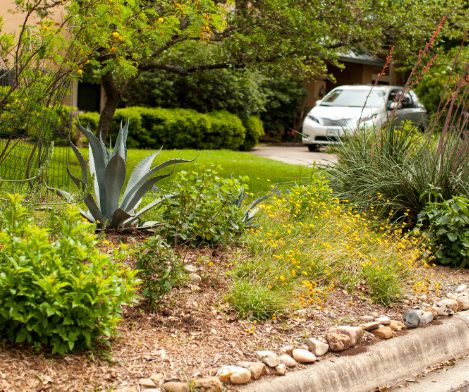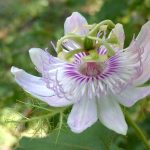Those yuccas, sages and muhly grasses likely don’t need all that extra water, even on the hottest summer day.
In newer subdivisions, when it’s done right, irrigation is carefully laid out to water the grass and the landscape beds separately. This hydrozoning technique groups plants with similar water needs so thirsty plants (like grass) can be watered together, according to the logic of the irrigation controller. In practice, this means turfgrass should be separated from the landscape beds.
But since most new landscape beds are already planted with fairly drought-tolerant material, one way to really lower your summer water bill is to simply turn off the irrigation in the xeriscape landscape beds.

That’s right, those yuccas, sages and muhly grasses likely don’t need all that extra water. On a summer day, this is natural water savings sitting in plain sight. It often comes as a surprise to many people that their landscape beds need less water than turfgrass. But unless you’re growing annuals or vegetables, the beds are often the most overwatered part of the entire landscape.
Here’s a clue: water-saver plants appear to wilt or “flag” on a hot August afternoon. But if leaves look fully recovered and unfolded the next morning, that’s a pretty good sign they’re performing as they should. After all, plants fold their leaves on a scorching afternoon to reduce their sun exposure. Native WaterSaver plants specialize in this kind of self-care (others have fuzzy, thick or pale leaf surfaces and other adaptations).
Of course, if your plants are still struggling the next morning, that is the best time to provide a good deep watering. It’s not unusual to have to do this a couple of times a week, especially for new plantings and plants with larger leaf surfaces (like hibiscus and tender tropicals). But you’ll soon realize how drought-hardy many common landscape plants in South Texas are, and that you can retire them from your regular grass irrigation schedule.
It usually happens every August and it’s a good time to assess how your garden beds are performing. Remember, in an ideal WaterSaver garden the perennials shouldn’t be the ones crying out for water.
This year most of my WaterSavers are chugging along, but I pay attention to the ones that aren’t performing well. They’ll be candidates for relocating next winter. For now, August is four short weeks, but the most important ones if you’re evaluating your own WaterSaver design.
The takeaway? Even in the hot, dry days of August when you’re likeliest to overuse your sprinklers, there are still ways to cut water use in half.
When you see the savings on your water bill, you may prefer to keep it that way.




